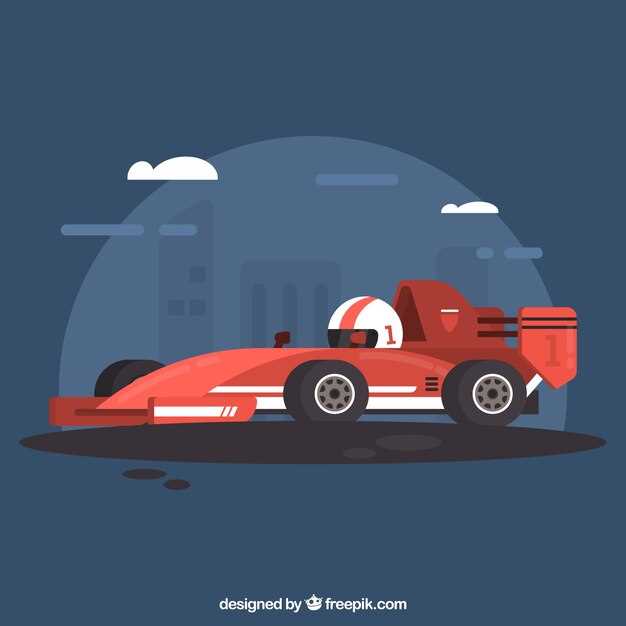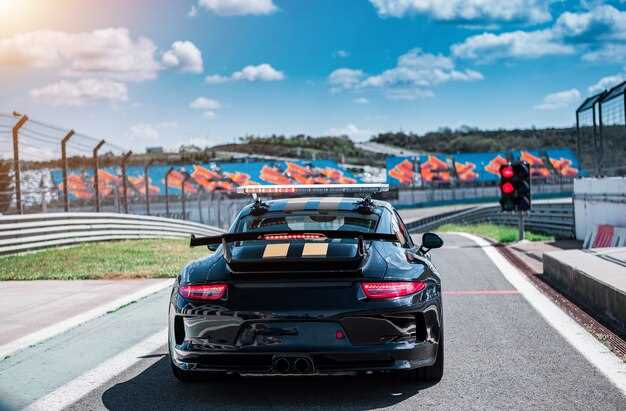
The Role of Diffusers in Race Cars
- George Harris
- 0
- Posted on

In the high-stakes world of motorsport, where split-second decisions can determine victory or defeat, every component of a race car plays a critical role in its overall performance. One such component that exemplifies this principle is the diffuser. Positioned at the rear of the vehicle, the diffuser is essential for optimizing aerodynamics and enhancing downforce. By understanding the intricacies of how diffusers function, teams can unlock significant performance advantages on the track.
Diffusers work by accelerating the airflow underneath the car, which reduces pressure and generates downforce. This downforce is crucial for maintaining grip in corners and improving stability at high speeds. The design and implementation of a diffuser can vary significantly between race cars, influenced by factors such as regulations, track conditions, and the specific performance goals of the team. Therefore, a thorough examination of diffuser design provides insights that extend beyond mere academic interest; it has practical applications that directly affect competitive outcomes.
Moreover, the impact of diffusers extends to fuel efficiency and tire management, showcasing the multifaceted role they play in a race car’s performance envelope. As teams continue to innovate and push the boundaries of engineering, understanding the nuances of diffuser design and its effects on racing dynamics will remain a vital aspect of competitive strategy. In this article, we will delve deeper into the mechanics of diffusers, examining their influence on race car performance and the ongoing evolution of their designs in the quest for victory.
How Diffuser Design Influences Downforce Generation

The design of a diffuser plays a crucial role in the aerodynamics of a race car, significantly influencing downforce generation. A well-engineered diffuser enhances airflow under the vehicle, creating a pressure differential that pulls the car towards the track surface. This principle is grounded in Bernoulli’s equation, where increased velocity of airflow results in lower pressure, thus generating downforce.
One of the key elements of diffuser design is its shape and angle. The tapered design, which generally includes a wider entry leading to a narrower exit, facilitates an acceleration of air as it passes through. This shape not only maintains the airflow but also minimizes turbulence, promoting smoother air passage and enhancing downforce efficiency. Additionally, the angle of attack can be adjusted; a steeper angle can increase downforce but may also contribute to drag, which must be carefully balanced.
The length and height of the diffuser also affect performance. A longer diffuser can create a larger area for the airflow to expand and decompress, resulting in more significant downforce generation. However, regulations may limit these dimensions, necessitating innovative designs that maximize effectiveness within legal constraints. Furthermore, the position of the diffuser relative to other aerodynamic components, such as the rear wing, can influence overall efficiency. Proper integration ensures that airflow directed by the diffuser complements the wing’s performance rather than disrupts it.
Another aspect to consider is the surface texture of the diffuser. Rougher surfaces can energize the boundary layer, delaying the onset of flow separation, while smoother surfaces reduce drag. Experimentation with various textures can tailor the diffuser’s performance to specific tracks or racing conditions.
In conclusion, understanding the intricate relationship between diffuser design and downforce generation is essential for optimizing race car performance. A successful diffuser balances shape, angle, dimensions, position, and surface characteristics, resulting in enhanced grip and stability at high speeds while mitigating adverse effects like drag.
The Role of Diffusers in Optimizing Airflow and Drag Reduction
Diffusers play a crucial role in the aerodynamic efficiency of race cars by manipulating the airflow beneath the vehicle. Their primary function is to manage the transition of high-pressure air to low-pressure zones, which helps to generate downforce while minimizing drag. This balance is essential for high-speed stability and improved cornering performance.
By design, diffusers create an area of expansion for the airflow as it exits from under the car. This expansion accelerates the air, leading to a reduction in pressure. The shape and angle of the diffuser are meticulously crafted to optimize this airflow transition, ensuring that the air is managed efficiently. A well-designed diffuser can significantly enhance the ground effect, contributing to increased downforce that allows the tires to grip the track better.
The impact of a diffuser on drag reduction is equally significant. As air flows underneath the vehicle, the diffuser reduces the turbulence and drag associated with the vehicle’s wake. This streamlined airflow helps minimize the overall aerodynamic resistance. Drag is a crucial factor in race car performance; therefore, achieving a balance between downforce creation and drag reduction is vital for maximizing speed and handling on the track.
Moreover, the effectiveness of a diffuser can vary based on its design parameters, such as its angle of attack, length, and curvature. Engineers often conduct extensive wind tunnel testing and computational fluid dynamics simulations to refine these variables, ensuring that the diffuser complements the overall aerodynamic package of the race car.
In conclusion, diffusers are integral to race car design, enabling optimized airflow management and drag reduction. Their functionality directly contributes to a vehicle’s performance, making them a key focus in the development of competitive racing machines.
Measuring Performance Improvements from Diffuser Adjustments in Track Conditions

Assessing the performance improvements gained from diffuser adjustments requires a systematic approach that takes into account various track conditions. The effectiveness of a diffuser can significantly change based on factors such as track surface, weather conditions, and vehicle dynamics. Therefore, engineers and teams must consider these variables when evaluating changes to diffuser design or orientation.
To accurately measure performance improvements, teams often rely on a combination of data acquisition systems and aerodynamic simulations. On-track testing allows for real-time assessment of lap times and handling characteristics, enabling teams to observe the immediate effects of diffuser modifications under different track conditions. For instance, during high-temperature track days, a diffuser adjustment might improve downforce and reduce drag, enhancing overall speed and stability through corners. Conversely, on a wet track, the same adjustments may yield different results due to altered airflow and traction levels.
Engineers utilize telemetry data to monitor various parameters such as speed, aerodynamic load, and tire performance. By comparing the data gathered from different configurations, teams can identify which adjustments optimize performance more effectively. Additionally, simulations using computational fluid dynamics (CFD) can predict the impact of changes before they are tested on the track.
Another critical aspect of measuring performance improvements is consistency in testing methodology. Teams should establish baseline measurements under controlled conditions to ensure that any performance changes can be attributed directly to diffuser adjustments. Variables such as tire wear, fuel load, and driver performance should remain as constant as possible during these evaluations.
Ultimately, validating performance improvements from diffuser adjustments involves a multi-faceted approach incorporating real-world testing, telemetry analysis, and simulation. This comprehensive method allows teams to fine-tune their setups and make informed decisions that enhance race car performance across diverse track conditions.
